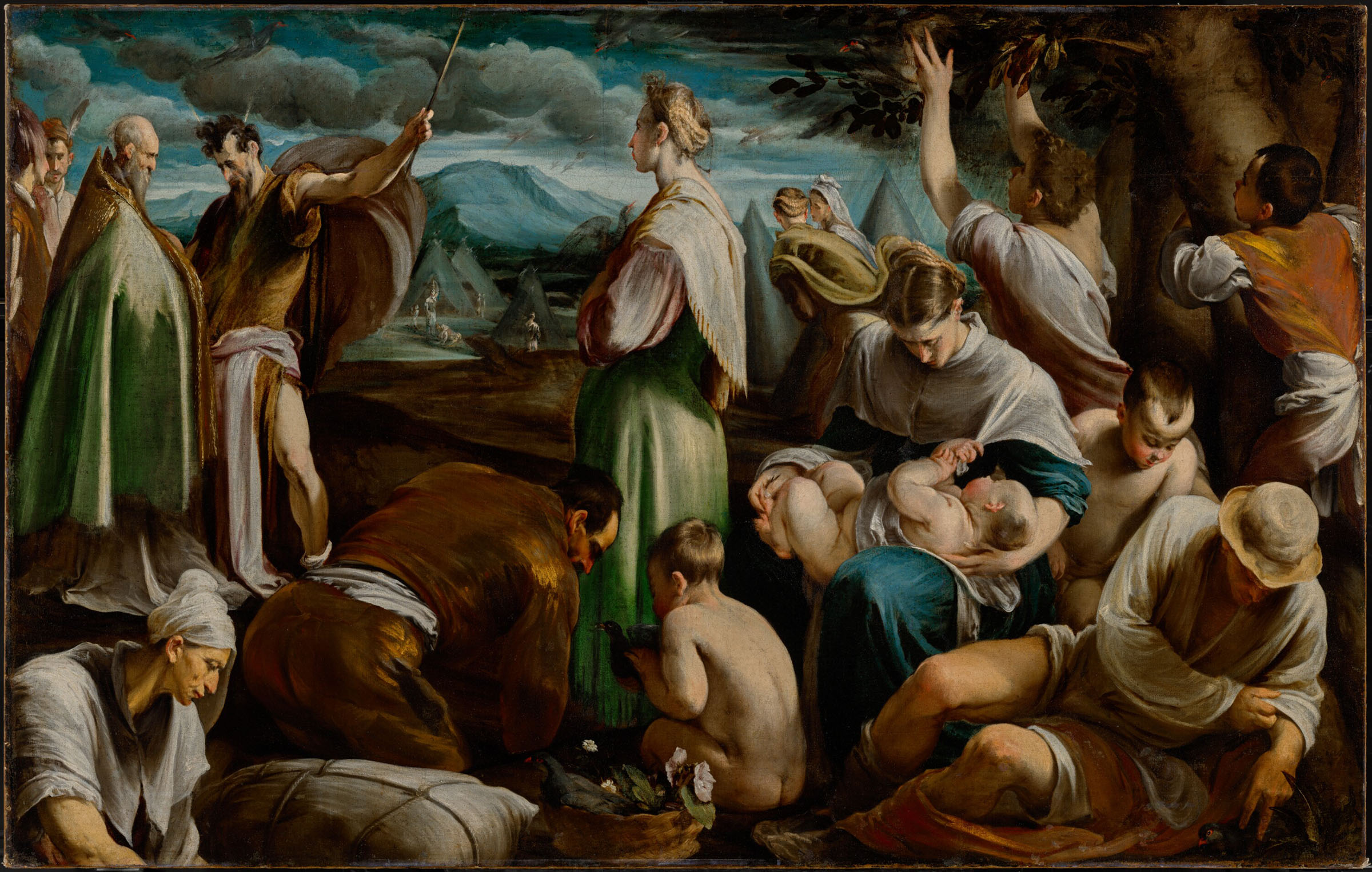Italy Upholds Getty's Right to Bassano
 |
| Jacopo Bassano, The Miracle of the Quails, 1554. Getty Museum |
The Art Newspaper reports that Italy's Council of State has ruled in favor of the Getty Museum in a case contesting its 2021 purchase of Jacopo Bassano's The Miracle of the Quails.
The Getty buy led to grumbling among some Italian politicians, vowing to investigate how such an important work was allowed to leave the country. In January 2022 the Italian culture ministry took the extraordinary step of "annulling" the painting' export license and gave the Getty 60 days to return the painting. (As far as I can tell, this development never made the news in the U.S.)
The culture ministry complained that the export license omitted the work's "true" title (given as Biblical Subject) and that the painting was dirty, obscuring its quality. The Pisa export office nevertheless inspected the painting three times before issuing the license to seller Alex Postiglione, who sold the painting to a private individual, unnamed, in the U.S. The latter sold it to the Getty.
Jacopo Bassano is not so well known as Titan or Veronese, but he has attracted much attention from scholars in recent decades. It is unusual for a large (7.7 ft wide) painting by a prominent 16th-century artist to be permitted to leave Italy. The Italian culture ministry called it an "absolute masterpiece… of exceptional artistic and historic importance."
The case recalls that of François Gérard's portrait of Prince Camillo Borghese, purchased for the Frick Collection in 2017. Italy revoked its export license and demanded its return. It remains at the Frick.
Then there's the Bernini bust of Pope Paul V that the Getty bought in 2015. Slovakia issued an export license for the bust, then had second thoughts after the Getty bought it in a private sale in London.
Comments
The Getty painting’s style is too Mannerist for my taste. Far more natural and beautiful, in my opinion, is Jacopo Bassano’s earlier painting, "The Flight into Egypt," (c. 1544–45), at the Norton Simon.
https://www.nortonsimon.org/art/detail/M.1969.35.P
https://collections.lacma.org/node/239015
The technical skill of such artists is a given. But their creative qualities make me think of what will reportedly make up a lot in the Lucas Museum.
However, artworks that are the opposite extreme of that and play up abstract for abstract's sake are similarly unsettling---or are certainly "been there, done that."
The museum's glory rests on its Baroque-period works, of one century later.
Also, it's completely hypocritical: what about the great artworks that European institutions "acquired" during their centuries of colonizing developing countries??
The worst offenders to me are in the UK.
I recall an export license the Getty was seeking years ago being refused and an observer based in London (don't remember his exact job or profession) deriding British officials for not allowing it. His backhanded compliment was since the collection of the Getty was so paltry, it could use the artwork. He implied that since London was already top-heavy with cultural artifacts (such as the Elgin Marbles), it shouldn't be so stingy or greedy. Or something like that.
The country still ridiculously ask for the Mona Lisa back every now and then, even though Leo himself sold it to the King of France.